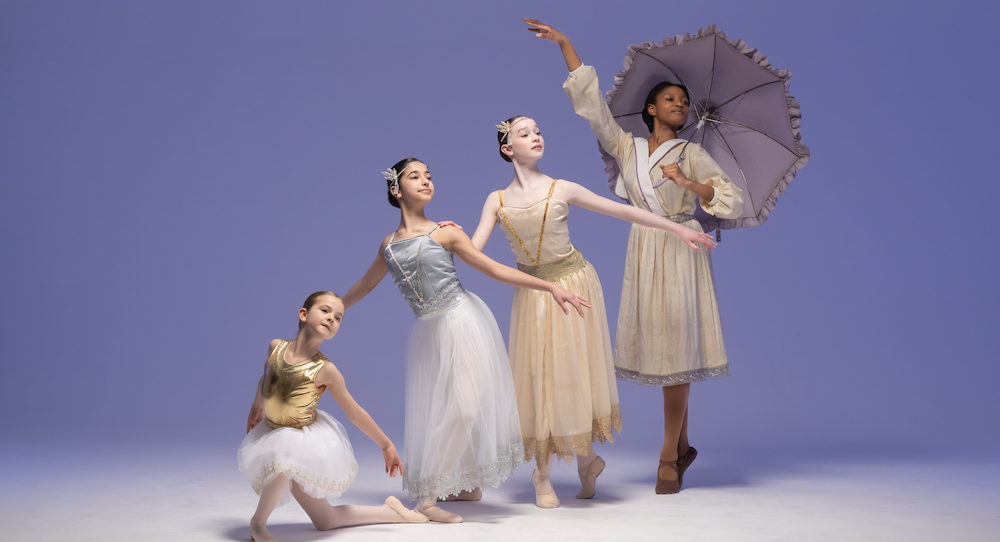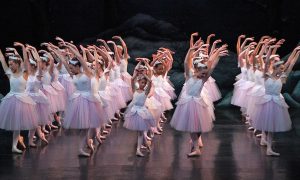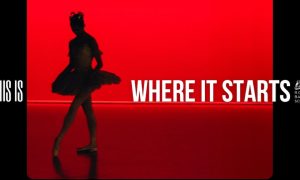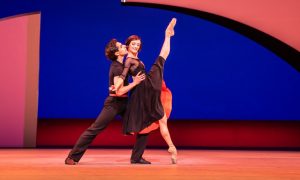Enveloped into a warm and accepting atmosphere from the minute the door opens, the buzz in the studios of the London Children’s Ballet (LCB) is full of united aim – to bring this year’s production to life; an adaptation of Ella’s Big Chance by the much-loved author and illustrator Shirley Hughes, which will be performed at the Peacock Theatre, London from 4 – 6 July.
“It is easy to fit in here,” says LCB dancer Giaime David, age 12. “You can quickly make friends with people. This week has been busy. On the first day, we ran Act 1 and then cleaned it in the afternoon. The following day, we did the same with Act 2, and today we are going through small bits to make them cleaner.”

It is a half-term school holiday, and the young members of this year’s company are spending it rehearsing. They are warming up downstairs in the main studio when I arrive, with live piano accompaniment by rehearsal pianist Andy Higgs. Lots of bright, alert and invested eyes.
LCB has made a mission statement to ‘inspire the pursuit of excellence and change lives through dance.’ As a registered charity, the organisation stages one new ballet each year in London’s West End performed by dancers aged 9-16, and runs outreach work in primary schools and disadvantaged communities. Uniquely, its training and performance opportunities are offered free of charge to talented children of all backgrounds.
As part of its objective to introduce new audiences to ballet and provide access to those who cannot easily afford or get to theatre productions, LCB presents four tours each year, which dancers audition for. Fully costumed performances are taken to residential care homes, hospices and special educational needs schools. Dancers ‘meet and greet’ with audience members and provide sensory experiences for children at special educational needs schools who are given opportunities to feel and try on costumes.
Today, before they begin an Act 1 run-through, the dancers are asked to close their eyes and envisage improving one more thing each time they step onto the stage. Whether that means improving one movement in particular or getting deeper into their character, they are reminded that every effort they make will elevate the performance as a whole.
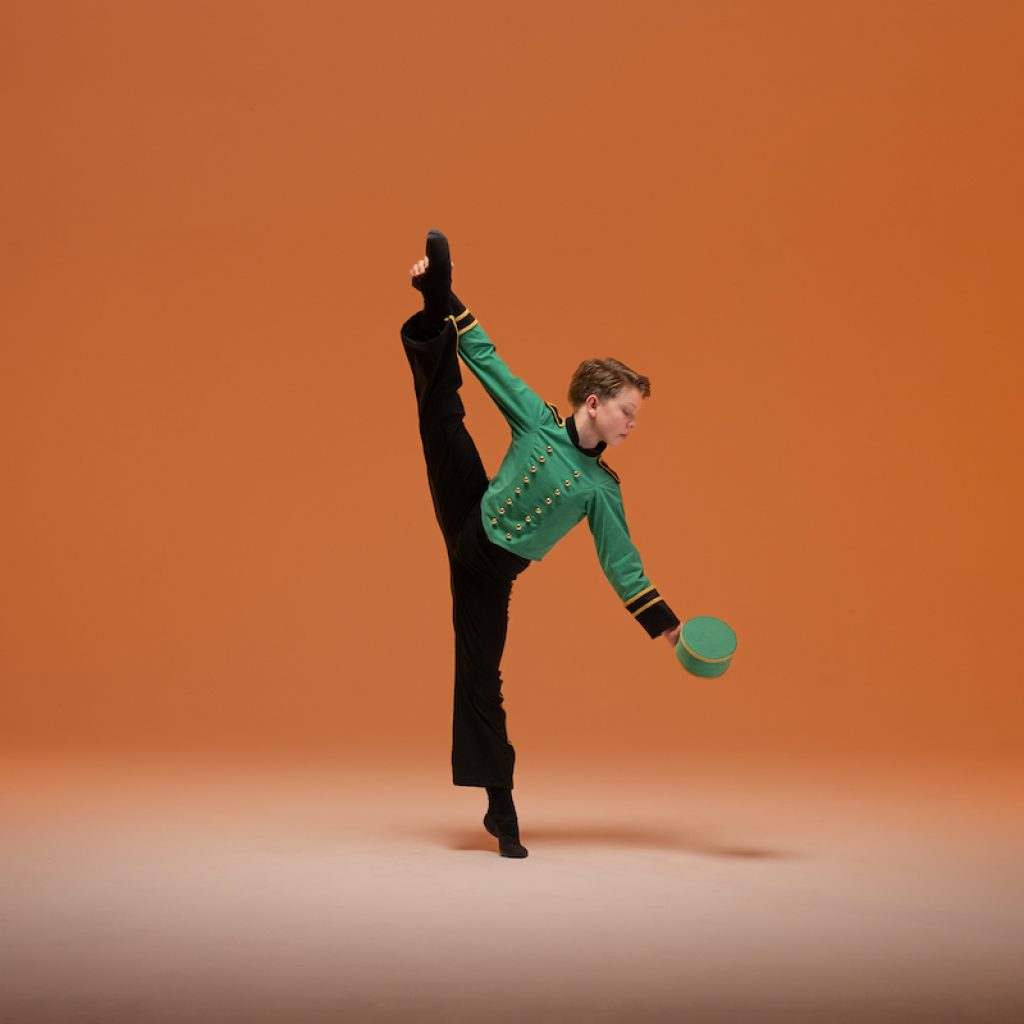
LCB Artistic Director Ruth Brill is keen to emphasize that every single person on the stage matters, and ignites the vision of Shirley Hughes watching their rehearsal, imagining her drawing away capturing their expressions and movements in all the corners of the stage.
“I’ve learned so much about artistry and performance,” shares 12-year-old Olivia Hamson. “When we are rehearsing, we are asked to tell the story of the part we are dancing to – to show we understand. I didn’t know before that there are no small roles in a ballet. Everyone here is a team – a whole group.”
Kristen McNally, Principal Character Artist of The Royal Ballet, is a very personable choreographer for Ella’s Big Chance. She makes the children feel seen by the way she interacts with them, and bubbles with enthusiasm as she describes how many ideas the children had to offer when she encouraged their freedom during the choreographic process.
“I do have an affinity with the step-sisters.” McNally admits. “I have played one of them, so they have been fun characters to create here.” She praises the children at the end of their rehearsal, saying, “You allowed us all to get lost in your magic.”
Costumes and set design are by Carrie-Ann Stein whom I am fortunate enough to see in action, adjusting costumes for the young dancers. Stein has a multi-disciplinary background, including training in costume construction with the Royal Opera House.
“It was important to honour the original drawings of Shirley Hughes, as well as putting a bit of a twist on it,” Stein says, describing the costume colour palate of warm oranges, golds and peaches to reflect the 1920s Italian location of the ballet. “We wanted to keep in mind that this is a ballet for children, meaning playful and fresh costume ideas, with raised waistlines and stretch fabrics to allow freedom of movement for the dancers.”
In designing, Stein says that the costumes came first, and then the set. She is looking forward to seeing the harmony of both coming together on the stage. I was given an exciting advance peek at the wardrobe – lots of magical costumes hanging up ready for their big moment – and the sewing room, where parent helpers sat together sewing in name labels today, and working on the kitten costumes for some of the youngest dancers.
“Carrie is an amazing costume-maker,” enthuses dancer Jennah Arrigo, 12. “I’m playing ‘Magic’ and my costume is so pretty!” It’s Arrigo’s first time in the LCB company this year, having taken part in the tour last year. She also reveals that at the very first rehearsal for Ella’s Big Chance, everybody sat down and read the story together and looked at the illustrations.
Iris Poole, 11, is playing Magic, a Baker and a Villager. “I was in the LCB development programme last year, and I was very shocked and happy when I got in this year! It’s so exciting because the Bakers open the whole show, and I have a big flowy skirt and a bonnet to wear, and we’re going to have real flour on our hands!”
It seems there will be lots of fun things for the audience to look out for.
“The most clever part is the flashback scene, when Ella is with her dad,” reveals 10-year-old Winnie Moore. “And the whole ballet has a lot of humour in it.”
While Giaime David chooses the opening scene, saying, “The opening is exciting, there is so much going on, the audience don’t know anything yet, and it’s all there to discover.”
“The musicians have a really good dance in Scene 7,” says Olivia Hamson. “Everyone stands on the sides joining in; the jazzy music is really good.”
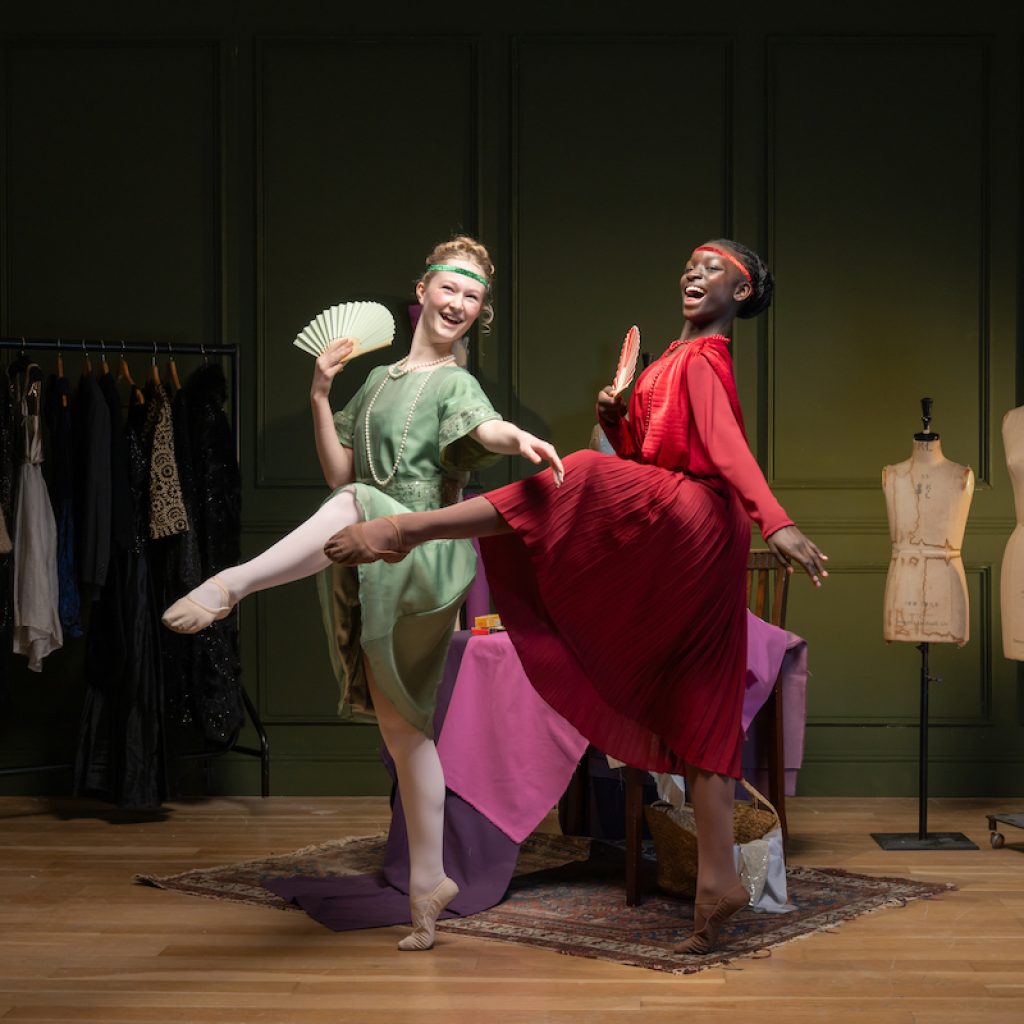
The animated and quirky jazzy music, reflecting the 1920s scene, is an original orchestral score composed by Ian Stephens, created 30 seconds at a time in collaboration with Ruth Brill as she described each part of the action. Whilst the dancers rehearse to live piano music, when they get to the theatre, they will have the astonishing privilege of rehearsing and performing with a live orchestra.
The production week must be a very proud time for parents. Paula Linehan, whose daughter is performing with LCB for a second year, says, “From a parent’s perspective, having a child in LCB, watching her being part of a company is amazing. Memories we as a family will cherish. She’s grown so much in confidence, her skills as a dancer have strengthened immensely. It’s such a nurturing environment, and she has made friends for life.”
“This has been in my head for two years now,” Brill says. “From the initial search to find a unique Cinderella story, to approaching Shirley’s Hughes’ son Ed Vulliamy with our ideas. Then working out how to make the book into a ballet, dividing the story into scenes and making sure there were enough parts for everyone. Everything will heighten once we get to the theatre, and all the artistic elements come together. The orchestra, the set, the costumes, the children. And the children always rise above and beyond what you would ever expect of them. At the heart of all of this is the children, as we instil the company ethos; learning what it is to work together. To be dedicated to something, and to see it pay off.”
What a very special place this is. And what an extraordinary journey for everybody involved: children, families, creatives, directors and audiences. Changing lives, one tendu at a time.
For more information on London Children’s Ballet, visit www.londonchildrensballet.com.
By Louise Ryrie of Dance Informa.


